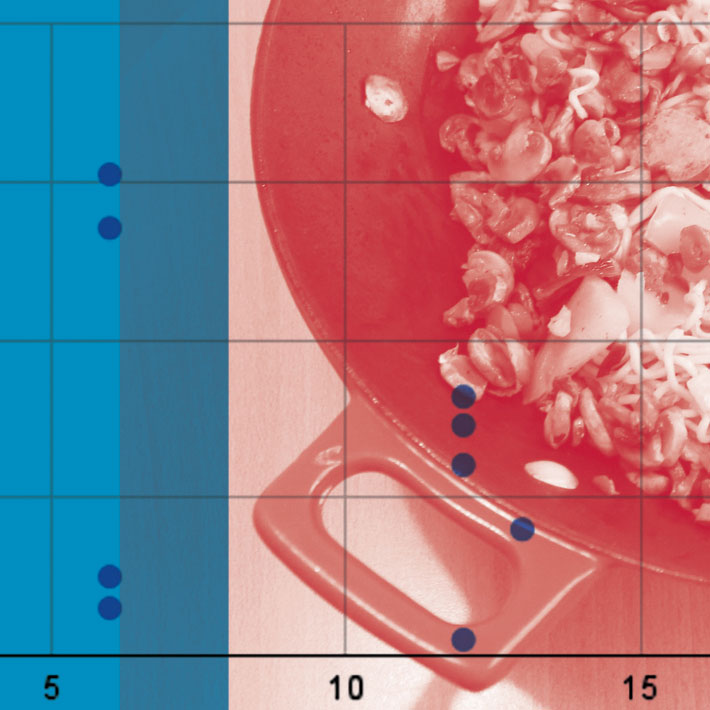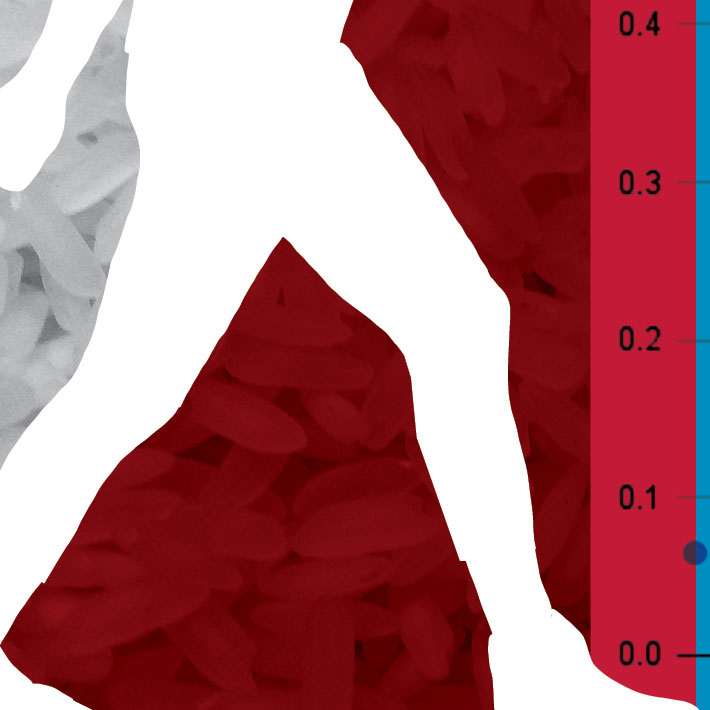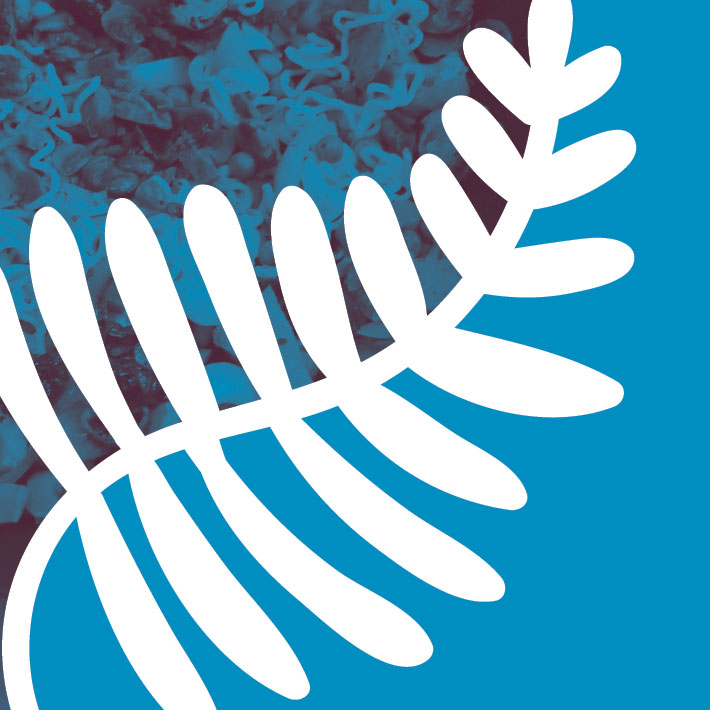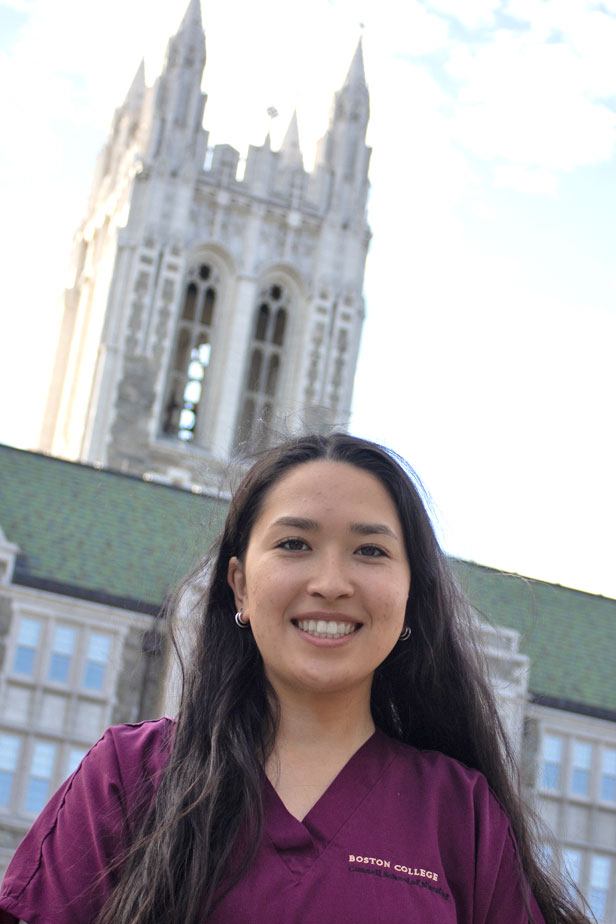In just a couple generations, type 2 diabetes has gone from being a relatively rare disease to America’s seventh leading cause of death. Today, more than one in 10 Americans live with the condition, while at least 100 million more are prediabetic. In response to this crisis, public health officials have often tried to help prediabetics with a one-size-fits-all approach, but the intervention that effectively helps one community may not meet the needs of another. As a result, many of America’s most vulnerable people are effectively denied access to lifesaving care.
Tam H. Nguyen, an associate professor at the Connell School, believes that one way to expand access is to tailor treatment programs to the unique culture and circumstances of each community. Her latest research project, which is funded by a three-year, $450,000 Betty Irene Moore Fellowship for Nurse Leaders and Innovators from the nursing school at UC Davis and the Gordon and Betty Moore Foundation, aims to determine the most effective ways of doing so.
In partnership with Quincy Asian Resources, Inc. (QARI), a nonprofit focused on promoting the welfare of immigrant communities in New York and Boston, Nguyen will be designing and evaluating prediabetic interventions tailored to Vietnamese American communities of varying income levels and proficiency in English.
This research could not be more urgent, since diabetes rates are rising faster among Asian Americans than among any other racial group. “One in two Asian Americans will become diabetic or prediabetic in their lifetime,” Nguyen said. “Supporting the health and well-being of the community is important to me not just because I am Vietnamese American but because this community is extremely under-researched and underserved.
THE CHALLENGE
The diabetes epidemic results from the interaction of many complex causes, but Nguyen singled out a few particular culprits.
“Asian Americans, like all Americans, live in an environment that promotes obesity,” she explained. “We’ve systematically taken physical activity out of our daily lives, and our work is often sedentary. For Asian Americans, however, what makes the situation more challenging is that the diabetes epidemic is largely silent.”

Associate Professor Tam H. Nguyen
Asian Americans tend to be less obese than the general population, Nguyen explained, so they are less likely to be considered high risk or screened, which means diabetes often goes undetected. The problem is exacerbated by widespread ignorance about consequential physical differences between Asian American populations and others.
“The problem is that for Asian Americans, most of their fat is concentrated in the belly, which is the most metabolically active,” she said. “That creates a situation where there’s a greater likelihood of chronic illnesses such as diabetes and cardiovascular disease at a lower BMI than you would see in other racial groups.”
The fast-rising rates among Asian Americans also result from earlier well-intentioned but ill-conceived outreach efforts from health officials. These efforts proved inadequate, Nguyen argues, because they tended to take a simplistic view of the communities they were trying to help.
“What the health services research world has done over the last 30 years is take an existing medical intervention, translate it, adapt some details, and say all Vietnamese Americans can now do this program,” she said. “The problem with that approach is that even within the Vietnamese American community, there’s far too much diversity for a one-size-fits-all program to work.”
By the numbers
9.2%
Asian Americans who have diabetes
50%
Asian Americans who will develop diabetes or prediabetes in their lifetimes
80%
Americans with prediabetes who don’t know they have the condition
That’s because the prevailing paradigm for treating prediabetics—the Diabetes Prevention Program (DPP)—is simple yet difficult to put into practice. The DPP is an evidence-based self-management and lifestyle intervention that focuses on helping patients lose 5–7% of their body weight through dietary changes and increased physical activity. When followed, the program has been shown to reduce the incidence of type 2 diabetes by more than 50 percent—but following the program requires a certain level of privilege and stability.

“The DPP works really well for someone who has the resources to engage in the program and buy the groceries to change their diet,” said Nguyen. “But not everyone has the resources to buy fresh fruits and vegetables, or the control of their lives required to show up for coaching once a week for six months.” These people, she explained, are not going to be well served by an intervention that puts the onus on the individual to make and sustain different choices.
THE RESEARCH PROJECT
One of the primary goals of Nguyen’s research project will be to determine the psychosocial phenotypes that inform how effective a given prediabetes treatment is for a given person. Psychosocial phenotyping is the method by which researchers identify patterns of measurable behaviors, psychological characteristics, and social factors that help explain the variation in people’s ability to self-manage chronic conditions.
“For example, if somebody doesn’t have the capacity or resources to fully engage in certain parts of the DPP, that circumstance could be associated with certain outcomes,” Nguyen said. “Identifying phenotypes like that could help us determine if a particular person should start medication, the program, or both.”

To reach diverse populations of Vietnamese Americans, Nguyen will partner with QARI, which has deep ties with local communities. “We will help Dr. Nguyen manage the. community outreach and identify the Vietnamese American groups in several states who can take part in the research project,” said Philip Chong, QARI’s president and CEO. “We’ll help her find the focus groups and get her the right data to eventually create a pilot that is culturally sensitive, creative, and life-changing.”
QARI will also help Nguyen by offering study participants essential social services—workforce development, mental health care, supplemental nutrition—that may make prediabetics more likely to respond well to treatment. For his part, Chong believes the project could help fill a crucial gap in the services QARI already offers.
“When Dr. Nguyen approached me about this grant, I was excited to see a more culturally sensitive approach to such an important issue,” Chong said. “We know that offering people rewards for changing their lifestyle that week is unlikely to motivate long-term change. What we need are stronger methods and more success stories.”
Because there is uncertainty about which interventions will prove effective, Nguyen will be conducting an adaptive study. That means she will be able to make changes to the trial design based on emerging evidence without jeopardizing the validity of the final results.

“We thought, Why not take a look at a particular decision point to see if it’s working for people or not?” she explained. “If it’s not, how might we take additional resources, support, or social services to get better outcomes?”
While Nguyen hopes that this project will provide the support some Vietnamese Americans with prediabetes need to change their lifestyles, she emphasized that systemic changes will also be necessary to address the diabetes crisis.
“Since healthy living takes a village, we have to address the social determinants of health,” she said. “During the pandemic, many Vietnamese Americans lost access to fresh food while for many reasons, mental health problems skyrocketed. These are not separate concerns: mental health and stress have a negative effect on diabetes and cardiovascular disease.”
Although this project is based around treating the unique needs of different Vietnamese American communities, Nguyen believes that the research could help improve care for all prediabetics.
“If we do our homework and get this right, the principles informing our culturally specific care can be applied to other populations as well,” she said. “This project is one way to think about how to restructure the system to make it easier for people to make healthy changes. Instead of just asking individuals to change their behaviors, however, we always need to start by listening to each community.” ▪
CLOSING THE GAP

Among Nguyen’s team of collaborators is her advisee May Tadano ’23, a nursing student from New Jersey. “I’m interested in public health nursing,” Tadano said, “so when Dr. Nguyen got the grant, I helped her do an overview of the existing literature.”
Her most important finding? The profound gaps in the research. “Almost none of the studies of Asian Americans included subanalyses based on age, gender, income, education level, and acculturation status,” she said. “That’s what Dr. Nguyen’s project is designed to fix.”
Tadano says she feels lucky to be taking part in the project. “Working with Tam has been a really great experience. I’m grateful that the nursing school integrates research into the curriculum.”



